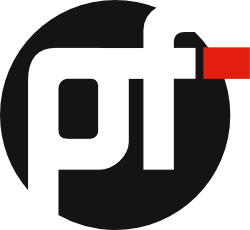In an article at the Motley Fool, Jeff Hwang posits that regulated online poker in the US is more financial mirage than opportunity for profit. An interesting read overall, there’s one aspect of Hwang’s piece that I’d like to further explore: The widening skill gap between the casual online poker player and the experienced one.
I can’t disagree that the gap exists, nor that it has widened dramatically in the last half decade. Where I do find a point of departure: Hwang’s implicit assertion that rooms are powerless to narrow the skill gap.
I actually think regulation in the US could provide some interesting opportunities to turn back the clock (if only to a degree) on this particular threat to the long-term viability of the industry. To that end, here are a few tweaks to the current online poker model I think rooms should consider before launching real-money poker in the US.
Limit the Number of Tables Per Player
It’s going to be tempting for regulated US sites to allow mass multi-tabling, especially if player liquidity presents the challenge many predict. For the health of the room in the long run, however, players should be limited to a far smaller number of simultaneous tables than you can play in the status quo (the current lowest limit I’m aware of is nine at PKR Poker). I’m talking about a number around six – or less.
Cutting the number naturally rebalances a room to a more sustainable proportion of experienced to casual players. Rooms can also tinker with advanced methods for limiting multi-tabling (as opposed to a blunt table cap) to provide flexibility for addressing player liquidity challenges as needed.
Segment Player Pools Based on Skill
This already happens on a number of online poker sites via “beginner’s tables” that are restricted to new players. A more sophisticated approach would fashion a dynamic lobby that offers a unique selection of games to every individual.
In this system, each player gets a rating, constantly updated, based on their total won-loss, account age and other salient factors. Players with low ratings (high losses, newer accounts, etc) would see tables heavily (although not exclusively) populated by similar players, while players with higher ratings would have access to progressively harder games. A crude version of this approach is already employed by the Everleaf Network; future systems would do well to include more rating factors, remove player choice and make the system opaque to players.
If rooms prefer a less radical / intensive approach, there’s the more basic tactic of controlling access to games and limits. Players might, for example, have to earn access to a higher limit by playing a certain number of hands. Alternatively, rooms could require certain bankroll thresholds for high stakes play, or follow Party Poker’s example and eliminate high-stakes games altogether. There are any number of examples, but the goal of all is the same: to help inexperienced players mitigate their risk.
Give All Players Access to Basic Tools
You can’t force a player to get better, but you can at least ensure that all players have access to a few basic tools – most critically some easy way to analyze hand histories and aggregate play data. Rooms might also offer some advanced tools (like a HUD) to appease more serious players, diminishing demand for powerful third-party services. By pairing such internal tools with aggressive attempts to stamp out unauthorized ones, rooms could establish greater parity when it comes to the resources available to the average player.
Poker sites, of course, already provide a number of tools to players. Whether it’s the odds calculator at Carbon Poker, access to poker training sites like CardRunners and Drag the Bar or interactive software like 888’s poker coach, some might argue that players aren’t suffering from a lack of access to tools that could improve their game.
That’s true enough on face, but a few facts undermine the apparent bounty. First, not all of the above examples are “free” – some require players to kick in rake. Second, no major rooms that I’m aware of offer anything that could reasonably substitute for Holdem Manager. Finally, it’s not enough to offer these tools to players – rooms have to actively encourage player engagement with the tools.
In short: Rooms are already on the right track, but player development tools need to be a more a fundamental function and less an add-on afterthought to have any substantial impact on the skill gap.
Build Promotions Around Lossback, Not Rakeback
Most current online poker promotions are essentially complex rakeback plans. Those that aren’t tend to be promotions that reward volume (leaderboards) or lottery-style affairs (PokerStars’ 80 billionth hand).
Rakeback and volume-based promotions offer poor returns to casual players, and lottery-style bonuses favor regulars as well. A more logical model for a room concerned with extending the lifespan of a recreational players’ bankroll is to factor in a players’ losses when distributing the promotional bounty across the player pool.
This sort of thing is, of course, standard operating procedure at Caesar’s live properties. Extending it to online poker could protect casual players from both skilled opponents and variance.
While we’re talking about the rake, keeping it low would also do wonders for the sustainability of a poker site. Rooms might even be well-served to experiment with redistributive rake structures that place less proportional burden on players at the micro to mid stakes.
While the games may well be much tougher than they used to be, I think there’s an inherent tendency to overstate the severity of the issue. By extending current efforts and considering new common-sense innovations to level the playing field, the rooms who emerge post-regulation in the US will have a chance to not only avoid, but potentially rectify, the mistakes the industry has made in the past.
